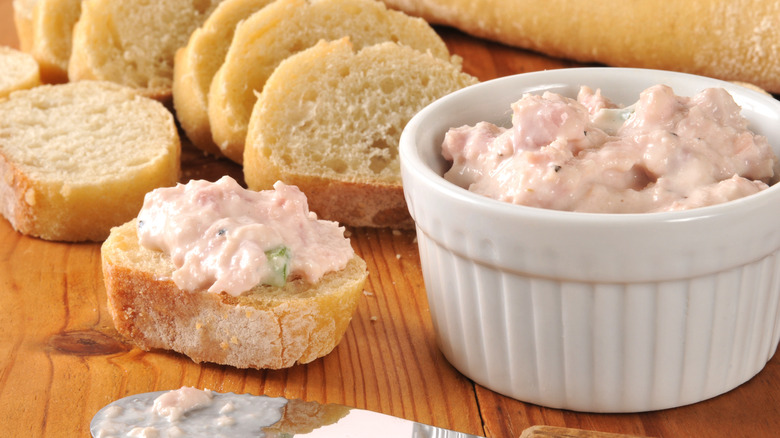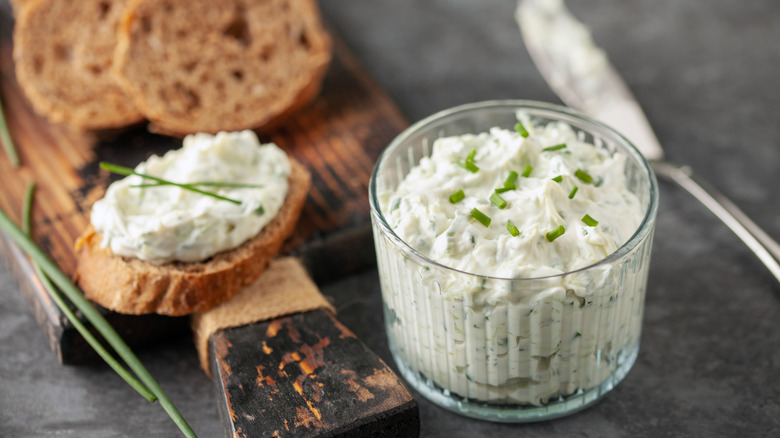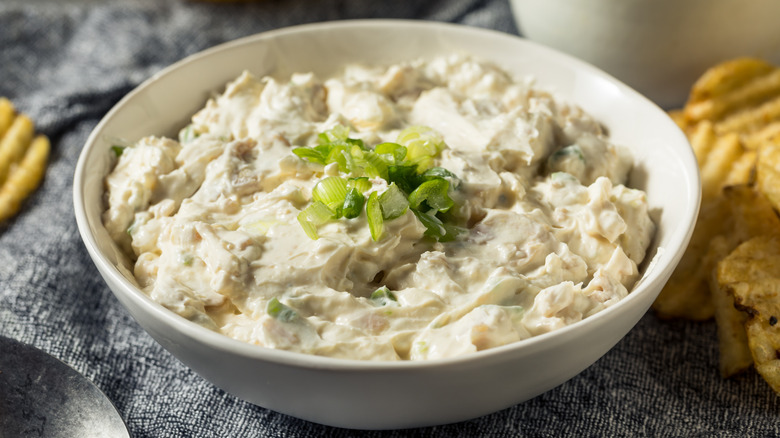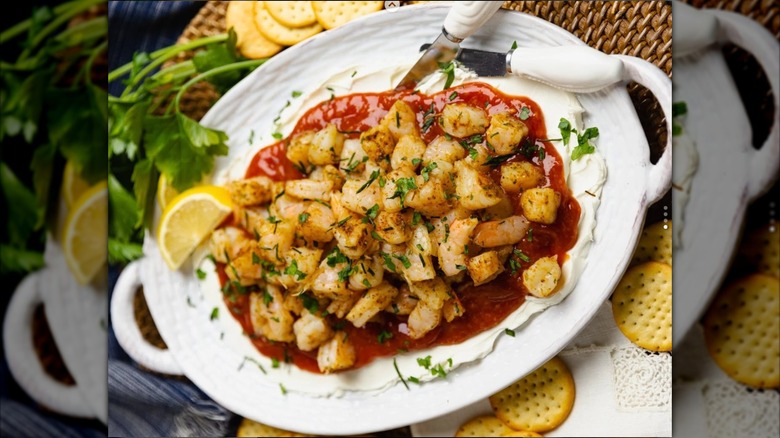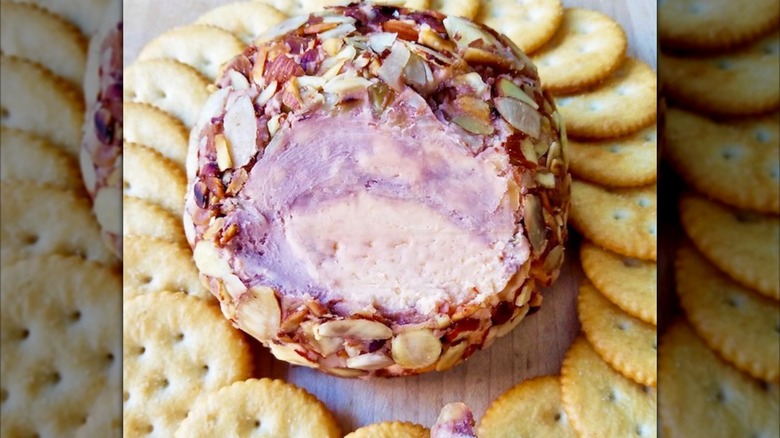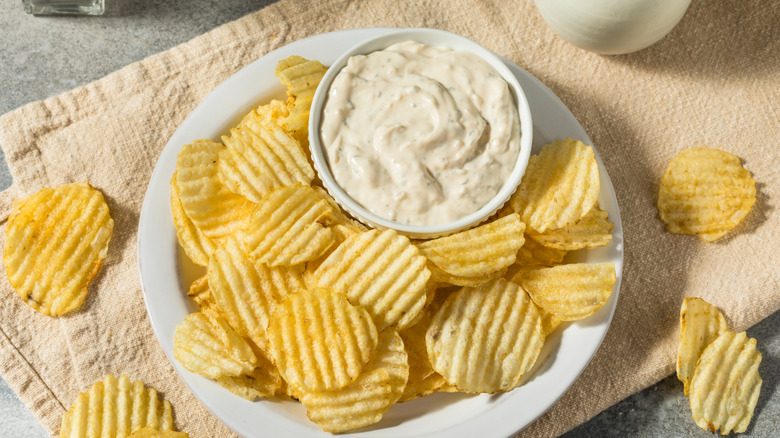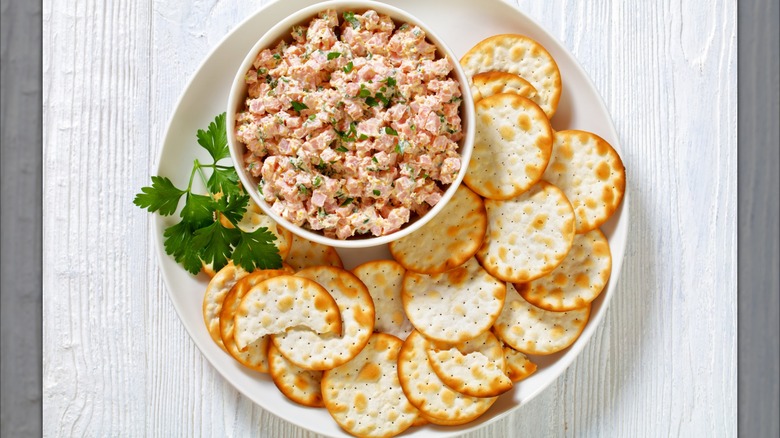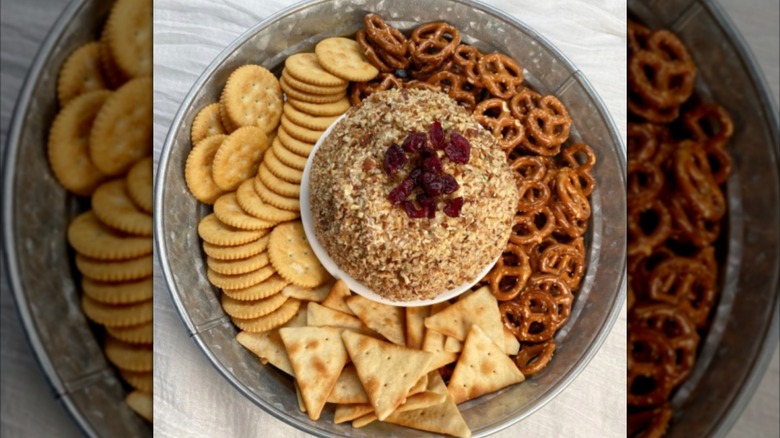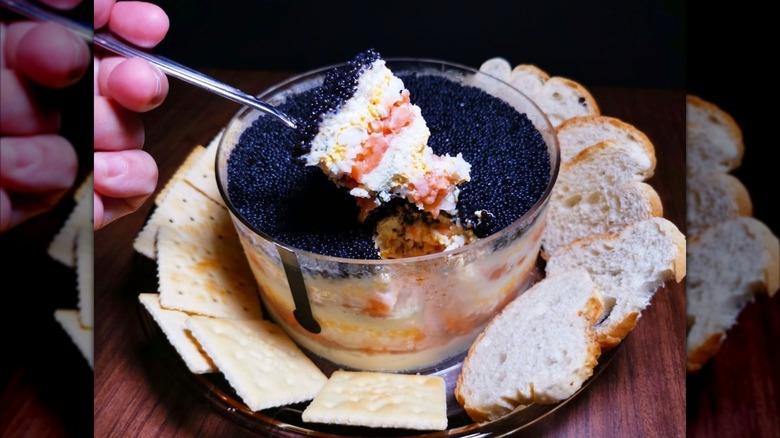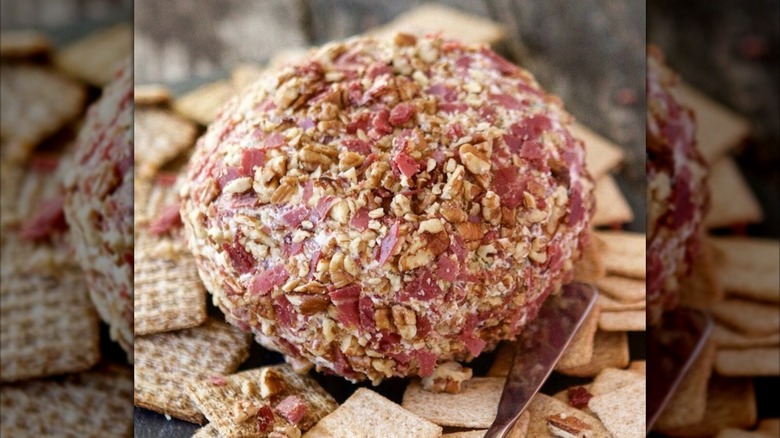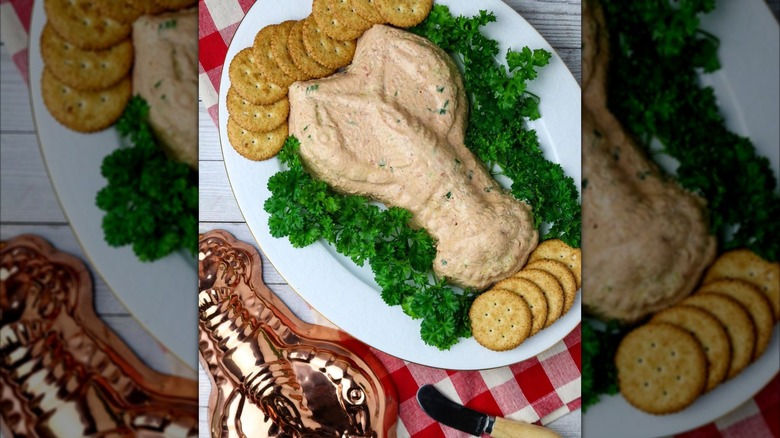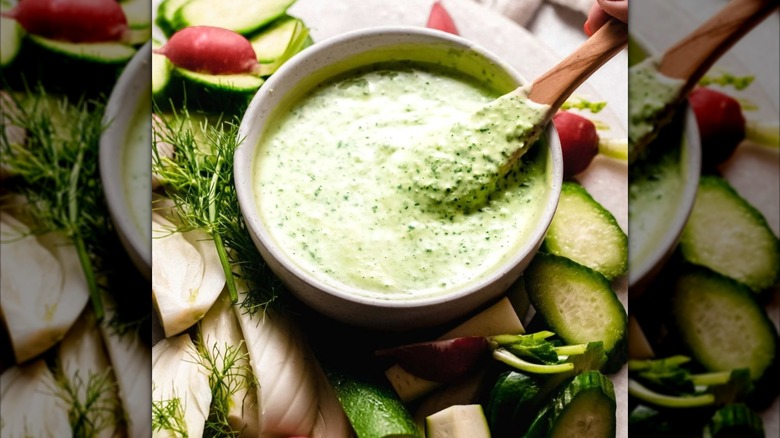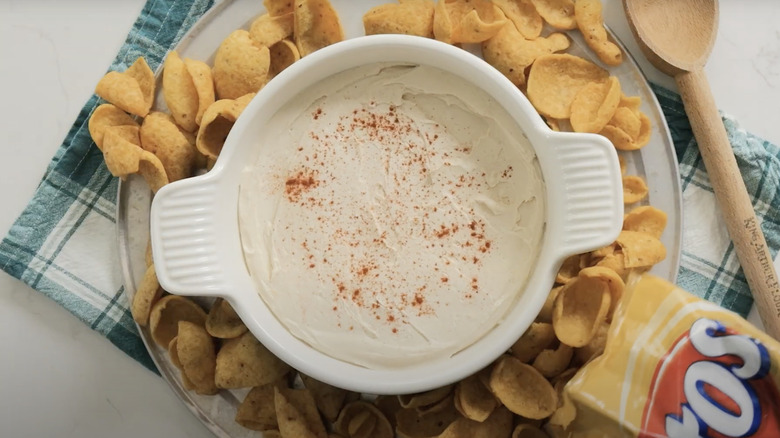12 Old-School Dips Almost Everyone Forgot About
Believe it or not, there was a time not so long ago when cream cheese and elegance were not mutually exclusive. When people talk about dips today, they usually mean guacamole, salsa, hummus, or labneh. But rewind a few decades, and the dip scene looked very different. Mid-century dips were less about fresh ingredients and more about maximizing convenience without sacrificing a bit of spectacle.
Many of these recipes were born in the test kitchens of Kraft, Campbell's, or other food companies, engineered to sell products while giving homemakers a shortcut to sophistication. Others appeared in cookbooks and women's magazines, promising effortless entertaining with minimal skill. Some were beloved classics of their era, and others are remembered today mostly as bizarre curiosities.
What unites them all is their deeply retro charm. They tell us about a time when processed cheese was aspirational, sour cream was glamorous, and a packet of French onion soup could turn anyone into the hostess with the mostest. These are the dips that time forgot, fascinating in their unapologetically vintage glory.
Benedictine spread
Invented in Louisville, Kentucky, Benedictine spread was the brainchild of Jennie Carter Benedict, a caterer and restaurateur who opened her namesake tea room in 1911. Somewhere between cucumber sandwiches and dainty luncheons, she whipped up this pale-green concoction of cream cheese, cucumber juice, onion, a dash of cayenne, and some drops of green food coloring.
In Kentucky, Benedictine still has its devotees who whip up tiny Derby tea sandwiches and cucumbery dips, but step outside the Bluegrass State and you'll likely be met with blank stares when you mention the spread. Unlike other regional dips that made it to the mainstream, Benedictine never quite made the leap into the broader American snack canon. It's not flashy, not packed with cheese pulls or bacon bits, and honestly, its subtle cucumber flavor might be too genteel for the big stage.
That makes it all the more fun to rediscover. Smooth and refreshing, Benedictine is like a culinary time capsule from an era of tea rooms and white gloves. While the drops of green food coloring that Jennie Benedictine includes in the original recipe really intensify the retro aesthetic, they can be omitted if you don't want your spread glowing an unnatural hue of green.
Clam dip
This one's for all the grandmas on the East coast. Even just the name clam dip is so beautifully simple it evokes the naïveté of an era when you could put two words together and you'd invented something new. Recipes vary, but they generally feature some heavy repeat offenders of the mid-century dip craze including sour cream and mayo, balanced out by the relative freshness and greenery of lemon juice and spring onions. And, of course, clams.
The clams in question are usually canned, although it's always encouraged to use fresh clams if you have them on hand. Clams have a briny, salty, oceanic taste and a chewy texture that blends well with the heaviness of the dip's base and are livened up by horseradish, hot sauce, and some of the dips livelier ingredients.
This vintage seafood dish aired on the Kraft Music Hall show, a variety show produced by Kraft foods which transitioned from a radio show to television in the late 1950s. Legend has it that the dip was so popular that 24 hours after the segment aired, anybody in New York City who wanted to whip up a bowl of clam dip was out of luck as the city's entire supply of canned clams had been bought up by the show's dip loving audience. Nowadays, you'll only find this dip alongside a qualifier explaining how deeply retro it is.
Cream cheese shrimp dip
In the 1970s and '80s, if you were entertaining and you really wanted to phone in a crustacean-based appetizer, you'd make cream cheese shrimp dip. Every time I read about this dip, people rave about how easy it is. Recipes vary, but the core ingredients are cocktail sauce, shrimp, and, of course, a block of cream cheese. Sometimes that cream cheese is softened and whipped into a base; sometimes it's just plunked down cold on a plate with shrimp layered on top and cocktail sauce poured over. Either way, it's the sort of appetizer that requires almost no cooking skill, a hallmark of many of the era's hors d'oeuvres.
Variations abound. Some people fold in mayonnaise for extra richness, or stir in lemon juice, Worcestershire, or horseradish for tang and bite. The result is a creamy, tangy, seafood-forward dip that pairs beautifully with buttery crackers or a pile of sturdy potato chips.
Like other cream cheese-based dips, this shrimp dip has mostly fallen out of fashion. Now if people want a crustacean-based appetizer, they might go for shrimp cocktail or a refreshing shrimp salad. But there's something undeniably nostalgic about the simplicity of it.
Port wine cheese ball
This one's for the holiday hosts who love a good blast-from-the-past snack. Even just the name Port Wine Cheese Ball is so gloriously retro you can practically hear Frank Sinatra playing on the gramophone. It takes the classic cheese ball (those globes of cheddar-cream cheese glory from the mid-20th century) and gives it a swirl of sweet ruby port wine.
The classic version fuses cream cheese, sharp cheddar (sometimes blue), Worcestershire, garlic and onion powders, and of course a generous splash of port. The mixture then gets chilled until firm and rolled in toasted nuts, giving a crunch on the outside and marbled purple when sliced open. It can also be served in a ramekin with the nuts omitted, though it doesn't quite deliver the same vintage aesthetic.
Wisconsin cheese-makers helped popularize port wine cheese, blending local cheddar with fortified port for a sweet-savory twist that felt novel and simple. These cheese balls were the snack of the season, especially around the holidays, when every mid-century hostess needed something that read elevated but took seconds to make.
California dip
When you hear the term "California dip," you probably think of something healthy and green glimmering in the coastal sunshine alongside some chilly cut vegetables. That, I regret to inform you, could not be further from the truth. You may know this dip by its other, more explicative name: French onion soup mix dip.
The recipe, which dates back to 1954, first appeared when a creative cook in Los Angeles stirred a packet of Lipton's French onion soup mix into a tub of sour cream, and California dip was born. It's almost laughably simple, but it turned out to be an instant sensation.
The flavor hits that salty, umami-heavy comfort note, with dehydrated onion flakes providing texture and a roasted sweetness that balances the cool tang of sour cream, and you can make it in about 90 seconds. Serve with a ridged potato chip (the stronger the better) and don't let anybody try to shame you for bringing back a simple classic. California dip eventually fell out of the cultural spotlight, overshadowed by healthier dips like hummus, salsa, and guacamole. If you want a healthier twist on this creamy dip, use full fat yogurt instead of sour cream, and if you really want to seem posh, you can use real onions instead of soup mix for an irresistible three-ingredient onion dip.
Ham salad
You have cake on birthdays and turkey on Thanksgiving, but what do you serve for a funeral? For much of the last century, the answer was ham salad. It's humble, cheap, and endlessly adaptable, which made it a staple at potlucks, luncheons, and yes, post-funeral gatherings where the bereaved did not have time or emotional capacity to whip up a five star lunch.
The recipe has roots in the Midwest and Southern United States and is often considered a depression-era food, devised as a way to use up leftover ham, which was often ground or finely chopped and stretched with mayonnaise, mustard, chopped pickles or relish, and sometimes a hard-boiled egg or two. While it's often served as a dip alongside buttery crackers, it's also delicious between two pieces of white bread. This once popular sandwich spread was also highly adaptable, so somebody's recipe for ham salad might depend on what they happen to have in the pantry that day.
The flavor is tangy, savory, and a little sweet depending on how heavy-handed the pickle relish is. Today, ham salad is often dismissed as too old-fashioned, but you can still find it at some delis in the Midwest.
Old English cheese ball
You might be fooled into thinking an Old English cheese ball has English cheese in it, but If there's one thing I've learned about dips in the 1960s, it's that ingredient authenticity was not at the top of the priority list. The recipe starts with brand specific Kraft Old English cheese spread which is technically cheese, but just barely. It's a highly processed product made by blending cheese with stabilizer and emulsifiers to make it shelf-stable, not exactly a gourmet concept in modern times.
But it was the '60s, and spreadable cheeses were an affordable substitute to fresh international cheeses, which hadn't yet made their way to the broader American market. And for some, it wasn't enough to serve the spread alone, they had to go one step further and make it into a cheese ball.
Enter cream cheese, once again the MVP of mid-century dips, lending heft and tang to this concoction. From there, the mixture was often mixed with Worcestershire sauce, garlic powder (why use the real thing?), and scallions and rolled in chopped nuts, sculpted into a neat orb, and placed proudly at the center of a party tray. With Ritz crackers fanned around it, the Old English cheese ball was presented triumphantly at suburban cocktail parties. Today, it reads as kitsch, but in its heyday, it was a perfectly acceptable appetizer.
Caviar pie
Few dishes scream retro luxe quite like caviar pie. The very name sounds like decadent caviar crashed into the humble American tradition of pie making. But despite its air of sophistication, caviar pie has fallen into the tacky backlog of dips from yesteryear.
The construction usually starts with a pressed crust of hard-boiled egg yolks, butter, and chopped onion topped with a thick cream cheese–sour cream mixture, and finally finished with a shimmering crown of caviar. You can use whatever caviar you like, but it's hard to imagine using fancy Beluga caviar in a recipe like this one. More likely the caviar in question would be inexpensive lumpfish or paddlefish roe, available in little glass jars at the grocery store.
What makes caviar pie so deeply retro is that combination of opulence and convenience. It's not particularly delicate or refined, but it looked like the height of chic when served in a crystal pie dish with crackers on the side. Today, it's hard to imagine serving caviar pie un-ironically, but there was a time when layering cream cheese and fish eggs was considered the peak of elegance.
Chipped beef cheese ball
If there's a Mount Rushmore of retro party spreads, the chipped beef cheese ball has to be on it. It's one of those recipes that looks like pure kitsch but somehow its ghost still manages to haunt the odd retro-themed cocktail party. The formula is a simple mix of cream cheese, Worcestershire sauce, green onions, and a packet of dried chipped beef, all mashed together and rolled into a ball before being chilled and served with crackers.
Chipped beef itself has a long and less-than-glamorous history. It's essentially salted, pressed beef, packaged in little glass jars, first available during World War I and once famous for its role in "SOS" (creamed chipped beef on toast), a vintage breakfast food served in military mess halls. By the mid-20th century, thrifty home cooks were looking for ways to dress it up, and cream cheese was the obvious partner. Rolled in bits of chipped beef with parsley or green onions, the cheese ball became a festive, salty, creamy, tangy centerpiece that was just sturdy enough to withstand repeated cracker dips.
The chipped beef cheese ball was a dish you made ahead, pulled out of the fridge, and set in the middle of the coffee table, knowing it would be demolished before the bridge game was over. Definitely retro, but also maybe timeless.
Shrimp mold
If you want a dish that truly encapsulates the spirit of mid-century entertaining, look no further than shrimp mold. This jiggly, pastel-hued dip was proudly molded into the shape of a Bundt or fish, ready to wobble onto a buffet table. Shrimp mold was less about flavor fireworks and more about presentation; it was a showpiece, as well as a testament to the magical versatility of gelatin.
The recipe usually starts with canned shrimp (fresh if you can), cream cheese, mayonnaise, tomato soup, and a packet of unflavored gelatin. Sometimes celery, green peppers, or onion made their way in for crunch. The mixture was poured into a decorative mold, chilled until firm, then dramatically unmolded and surrounded by crackers, celery sticks, carrot curls, or whatever other dippable crunchy morsels you happen to have on hand.
Like so many retro appetizers, shrimp mold walked a fine line between elegant and absurd. The seafood flavor was subtle, but the spectacle of shrimp suspended in creamy, tangy gelatin, lightened by vegetables was a showstopper. To a 1960s hostess, especially in New Orleans where the dip was popular, a shrimp mold in the center of the table was an occasion. Nowadays, it's almost impossible to imagine serving a gelatinous shrimp mold unless you were bringing it to a themed dinner party for laughs.
Green Goddess dip
The elegantly-named Green Goddess salad dressing has managed to hang on. It's spotted on restaurant menus and generally beloved as a tangy, herb-packed way to punch up a boring salad. Its cousin, Green Goddess dip, has largely slipped through the cracks of culinary memory. But back in the day, this verdant, creamy dip was everywhere, served alongside a crudité platter, its bright green color begging you to believe it was healthy.
The recipe, like the dressing, leans on a base of mayonnaise and sour cream, blended with tarragon, parsley, chives, lemon juice, and anchovy for that signature savory punch. As a dip, the proportions shifted to make it thicker and sturdier, meant to cling to carrot sticks and celery stalks. At the center of a vegetable tray, it looked cool and vaguely sophisticated, like something you'd serve at a California garden party.
But Green Goddess dip didn't live on, probably because crudité platters themselves went out of fashion, replaced by chips, salsa, hummus, and guacamole. This dip's downfall was that it was too tied to its moment.
Philly Hostess dip
If you've ever flipped through a mid-century magazine, maybe you've come across an ad for Philly Hostess dip. A simple mash-up of cream cheese blended with mayo, Worcestershire sauce, milk, lemon juice, and seasonings, in today's light, it sounds almost absurd to peddle gently dressed cream cheese as a legitimate appetizer.
But at the time, the name alone promised domestic glamour, like something you could whip up in minutes before setting your hair and greeting guests at the door with a tray of canapés. It was part of a broader wave of branded recipe marketing, where convenience foods were sold not just as products but as lifestyles. Philadelphia cream cheese was the star, but what it really sold was the idea that being a hostess didn't have to be hard.
Philly Hostess dip never made it out of the retro era. Today, it survives mostly as a creamy, beige reminder that sometimes, hospitality was as easy as opening a package.
